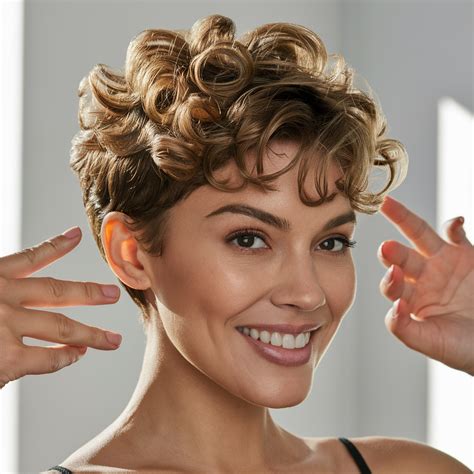Known for its luxurious volume and enviable curls, Italian curly hair is a coveted hair texture that deserves proper care and celebration. This comprehensive guide will provide you with everything you need to know about managing and styling your Italian curls, ensuring they look healthy, vibrant, and effortlessly glamorous.

Understanding the Unique Characteristics of Italian Curly Hair
Italian curly hair is characterized by its:
- Tight Curls: Ranging from type 3A (loose, beachy waves) to 3C (tight, springy curls), Italian curls often display a S-shaped pattern.
- Coarse Texture: Italian hair tends to be thicker than other hair types, giving it more body and structure.
- Dryness: Due to its porous nature, Italian curls can be prone to dryness and dehydration.
- Frizz: Without proper care, Italian curls can become frizzy and unmanageable due to their tendency to absorb moisture from the air.
Effective Strategies for Managing Italian Curly Hair
1. Embrace a Low-Poo or No-Poo Routine:
- Low-poo: Use a sulfate-free shampoo less frequently (1-2 times per week) to prevent stripping your hair of its natural oils.
- No-poo: Consider washing your hair with just conditioner (co-washing) to retain moisture and reduce frizz.
2. Deep Condition Regularly:
- Apply a deep conditioner or hair mask weekly to replenish lost moisture and strengthen your curls.
- Leave it on for at least 20 minutes for maximum absorption.
3. Detangle Gently:
- Use a wide-toothed comb or a detangling brush to gently remove knots and tangles.
- Start from the ends and work your way up to the roots to avoid breakage.
4. Avoid Heat Styling:
- Heat can damage Italian curls and increase frizz.
- Air-dry your hair or use a diffuser on a low setting to preserve curl definition.
5. Protect from Humidity:
- Use products that contain humectants (e.g., glycerin, aloe vera) to draw moisture into your curls.
- Wear a satin or silk headscarf or sleep on a satin pillowcase to reduce friction and prevent frizz.
Styling Techniques for Italian Curly Hair
1. Scrunch-Drying:
- Apply a curl-enhancing product (e.g., mousse, cream) to damp hair.
- Scrunch your hair upwards with your hands to encourage curl formation.
- Allow your hair to air-dry for defined, bouncy curls.
2. Diffuser Styling:
- Attach a diffuser to your hairdryer and set it to a low, cool setting.
- Place the diffuser at the roots of your hair and gently move it around to distribute heat evenly.
- Keep the diffuser at a distance to avoid overheating and damage.
3. Curling Iron Method:
- Section your hair and curl small sections using a curling iron with a wide barrel (1.5-2 inches).
- Wrap your hair around the barrel and hold for a few seconds, then release gently.
- Brush out the curls to create more volume and blend the ends.
4. Braid Out:
- Braid your damp hair into large sections.
- Allow the braids to dry overnight or blow-dry them on a low setting.
- Unravel the braids to reveal soft, loose curls.
Pros and Cons of Italian Curly Hair
Pros:
- Volume and Body: Italian curls add natural volume and body to your hair.
- Effortless Glamor: With proper care, Italian curls can be effortlessly styled for a glamorous look.
- Versatility: Italian curls can be styled in various ways, from beachy waves to defined curls.
Cons:
- Dryness and Frizz: Italian curls can be prone to dryness and frizz without proper hydration.
- Time-Consuming Styling: Styling Italian curls can be time-consuming, especially when air-drying.
- Potential Damage: Heat styling and frequent washing can damage Italian curls.
Conclusion
Embracing your Italian curly hair is a journey of self-discovery and empowerment. By following these effective strategies and trying out the suggested styling techniques, you can enhance the beauty of your natural curls and showcase them with confidence. Remember, your curls are a unique and beautiful part of who you are, so celebrate them and embrace their captivating charm.
